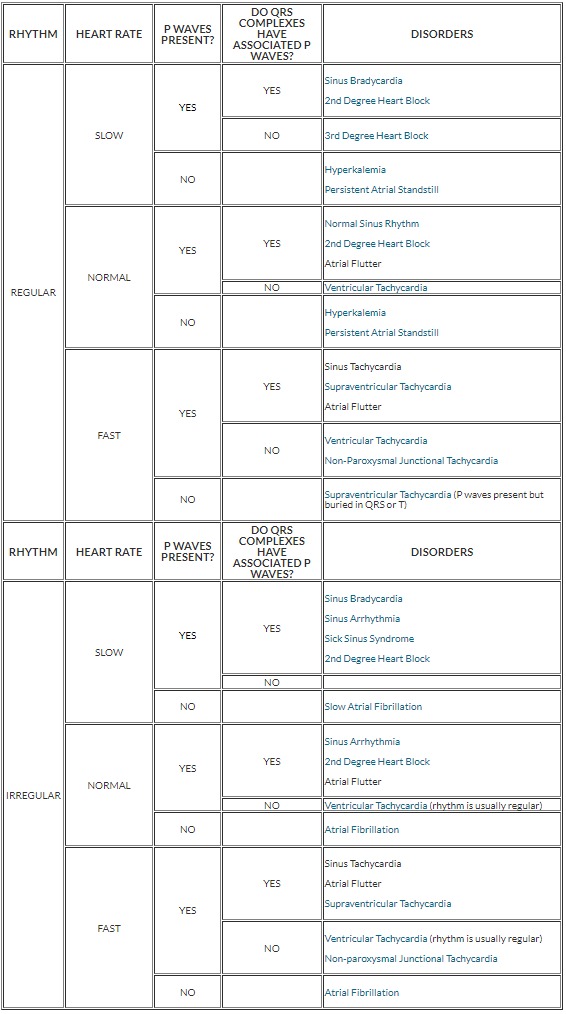Back to Course
Electrocardiology
0% Complete
0/0 Steps
-
Basics of ECG Interpretation11 Topics
-
Normal ECG Parameters
-
ECG Interpretation of Chamber Enlargement4 Topics
-
Dysrhythmias
-
Bradycardia
-
Heart Block3 Topics
-
Sick Sinus Syndrome
-
Tachycardia8 Topics
-
Hyperkalemia
-
Myocardial Hypoxia/Ischemia
-
Low Amplitude QRS Complex
-
Wide QRS Complex
-
Bundle Branch Block
-
Differentials for ECG Abnormalities
Diagnostic Algorithm
- Determine the ventricular rate – note paper speed.
- Determine the atrial rate – note paper speed.
- Are P and QRS associated?
- same rate
- reasonable PR interval
- consistent PR interval
- Determine PR interval – note paper speed
- does it vary?
- Are there any P waves that are not followed by a QRS complex?
- Are there any QRS complexes with no P waves?
- Determine the width of the QRS complexes – note paper speed.
- Is the rhythm regular or irregular?
- Any premature beats? – note morphology and duration
- Are the P waves positive in lead II?
- Are the QRS complexes of normal morphology?
The critical feature with most dysrhythmias is to identify P waves (if present), note if the atrial rate is equal to, less than, or greater than the ventricular rate, and note if there is any relationship between the P waves and the QRS complexes.

